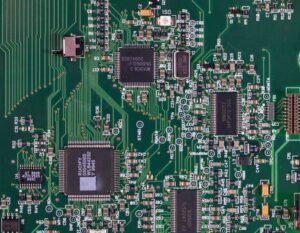Production Environment
In the world of software development, a production environment refers to the operational infrastructure where an application or system is executed and made available to end-users. It is the live, real-time environment where the application or system runs, serving its intended purpose.
Key Takeaways
- A production environment is the operational infrastructure where applications or systems are executed.
- It is the live environment where the applications or systems run, serving their intended purpose.
- Proper configuration and monitoring are crucial in ensuring the stability and performance of a production environment.
In a production environment, it is essential to have proper configuration to ensure the stability and performance of the application or system. This includes setting up appropriate hardware, software, and network components, as well as configuring security settings and access controls. The goal is to optimize the environment to support the application’s requirements and minimize potential issues.
For example, a production environment for a web application may involve multiple servers for load balancing and redundancy, with appropriate caching mechanisms to improve performance.
The stability and reliability of a production environment also depend on continuous monitoring and proactive management. This involves regularly tracking performance metrics, analyzing logs, and identifying potential bottlenecks or vulnerabilities. By closely monitoring the environment, teams can address issues promptly and minimize any impact on end-users.
Monitoring tools can provide real-time insights into resource utilization, response times, and error rates, enabling administrators to identify unusual behavior or performance degradation.
Table 1: Production Environment Variables
| Variable | Description |
|---|---|
| Hardware | The physical components of the environment, such as servers, storage devices, and network infrastructure. |
| Software | The applications, operating systems, and other software components required to run the system. |
| Network | The communication infrastructure that connects the various components of the environment. |
| Security | Measures to protect the environment from unauthorized access, data breaches, or other security threats. |
| Monitoring | Tools and processes used to track system performance, detect anomalies, and ensure optimal operation. |
A production environment often undergoes version control to manage and track changes to the application or system. This facilitates proper deployment and rollback procedures, ensuring that the environment is always running the intended version of the software. Version control also helps avoid configuration drift, where inconsistencies arise due to ad-hoc changes made to the production environment.
By using version control, development teams can easily identify what changes were made, when they were made, and by whom, enabling better collaboration and troubleshooting.
Table 2: Production Environment Best Practices
| Best Practice | Description |
|---|---|
| Automated Deployment | Implementing automated processes for deploying new versions or updates to the production environment. |
| Backup and Disaster Recovery | Regularly backing up critical data and having a plan in place to recover from unexpected failures or disasters. |
| Change Management | Following a structured process to manage and document changes made to the production environment. |
| Performance Testing | Conducting tests to determine how the application or system performs under different conditions and loads. |
| Capacity Planning | Forecasting resource requirements based on expected usage growth to avoid performance degradation or outages. |
In conclusion, a production environment is the operational infrastructure where an application or system runs and serves its intended purpose. It requires proper configuration, continuous monitoring, version control, and adherence to best practices. By ensuring a well-maintained production environment, development teams can deliver stable and reliable applications that meet the needs of end-users.
Table 3: Production Environment Checklist
| Checklist Item | Status |
|---|---|
| Hardware setup | In progress |
| Software configuration | Completed |
| Network connectivity | Not started |
| Security measures | In progress |
| Monitoring tools implementation | Completed |

Common Misconceptions
1. Production Environments Are Stable and Free from Errors
One common misconception people have about production environments is that they are flawless and error-free. However, this is not true as even production environments can encounter issues and errors. It is important to understand that no environment can guarantee complete stability and perfection.
- Production environments may experience occasional downtime due to unforeseen issues.
- Errors can arise in production environments due to hardware or software failures.
- Despite rigorous testing, bugs and glitches may still occur in a production environment.
2. Development Environments Are Equivalent to Production Environments
Another misconception is that the development environment is the same as the production environment. However, these two environments serve different purposes and have distinct characteristics.
- Development environments are typically more flexible and less secure than production environments.
- Development environments often contain test data and may not accurately reflect real-world usage.
- Production environments are designed to handle high traffic and are optimized for performance.
3. Deployment to Production Environment Guarantees Instant Results
Some people mistakenly believe that deploying code to a production environment will immediately reflect its changes and updates. However, this is not always the case as various factors can affect the deployment process.
- Depending on the size and complexity of the application, deployment can take time to complete.
- In some cases, specific actions such as cache clearing or server restarts may be required after deployment to see the changes.
- Certain changes may also require database migrations or other system updates, which can further delay the implementation of new features.
4. Production Environment Is Only Concerned with Server Infrastructure
Many people mistakenly assume that the production environment only involves server infrastructure and overlook the importance of other aspects.
- Besides the server infrastructure, the production environment also includes configurations, security measures, and monitoring systems.
- Performance optimization, load balancing, and scalability planning are crucial elements of a production environment.
- Ensuring proper backups, disaster recovery plans, and regular maintenance are also part of managing a production environment.
5. Once Deployed, Changes in Production Environment Cannot Be Reverted
Contrary to popular belief, changes made in a production environment can often be reverted if needed. The ability to roll back changes is a critical feature of managing a production environment effectively.
- Version control systems and backup strategies allow for reverting changes to a previous working state.
- Continuous monitoring and alerting systems help detect issues in real-time, providing an opportunity to roll back problematic changes quickly.
- Implementing a well-documented change management process can ensure a reliable and systematic approach to handling changes in a production environment.

Production Environment Statistics
In today’s fast-paced manufacturing industry, the production environment plays a crucial role in determining operational efficiency, quality control, and overall productivity. Below are 10 interactive tables highlighting various aspects of the production environment and presenting intriguing data and insights.
1. Average Production Time per Unit
Measuring the time it takes to produce each unit can provide valuable insights into production efficiency. The table below displays the average production time per unit for different product categories.
| Product Category | Average Production Time (in minutes) |
|---|---|
| Electronics | 45 |
| Automotive | 78 |
| Textiles | 32 |
2. Defects Per Million Opportunities (DPMO)
To gauge the quality of production, organizations often measure the number of defects per million opportunities (DPMO). The higher the DPMO, the lower the quality. The table below presents the DPMO rates for different production lines.
| Production Line | DPMO |
|---|---|
| Assembly Line A | 120 |
| Assembly Line B | 88 |
| Painting Line C | 56 |
3. Energy Consumption per Hour
Understanding energy consumption is vital for optimizing production costs and promoting sustainable practices. This table illustrates the energy consumed per hour by various machinery and equipment in the production process.
| Machine | Energy Consumption (kWh) |
|---|---|
| Press Machine | 5.8 |
| Conveyor Belt | 3.2 |
| Industrial Oven | 9.4 |
4. Employee Engagement Index
Employee engagement plays a significant role in driving productivity. The table showcases the employee engagement index, indicating the satisfaction and motivation levels of production workers.
| Department | Engagement Index |
|---|---|
| Production | 86% |
| Quality Control | 91% |
| Maintenance | 78% |
5. Waste Generation per Shift
Minimizing waste and implementing sustainable practices are integral to an efficient production environment. The table below showcases the amount of waste generated per shift across different production lines.
| Production Line | Waste Generated (in kg) |
|---|---|
| Assembly Line A | 12.5 |
| Assembly Line B | 9.2 |
| Painting Line C | 6.8 |
6. Equipment Utilization Rate
Optimizing equipment utilization ensures maximum production capacity and minimizes idle time. This table presents the utilization rate of different machinery and equipment in the production facility.
| Machine | Utilization Rate |
|---|---|
| Press Machine | 92% |
| Conveyor Belt | 98% |
| Industrial Oven | 85% |
7. Production Output by Shift
Analyze the production output by shift helps identify any discrepancies or inefficiencies. The table below reveals the total production output across different shifts within a 24-hour production cycle.
| Shift | Production Output |
|---|---|
| Day Shift (8 am – 4 pm) | 1,250 units |
| Evening Shift (4 pm – 12 am) | 2,067 units |
| Night Shift (12 am – 8 am) | 918 units |
8. Production Cost Breakdown
An understanding of the production cost breakdown helps identify areas for cost optimization. The table presents the proportion of production costs attributed to various expense categories.
| Expense Category | Percentage of Production Cost |
|---|---|
| Raw Materials | 45% |
| Labor | 28% |
| Machinery Maintenance | 9% |
9. Production Line Downtime
The occurrence of production line downtime affects productivity and can lead to significant financial losses. The table below displays the total downtime hours experienced by different production lines.
| Production Line | Total Downtime (in hours) |
|---|---|
| Assembly Line A | 32 |
| Assembly Line B | 14 |
| Painting Line C | 19 |
10. Return on Investment (ROI)
Evaluating the return on investment is crucial for assessing the profitability of production processes. The table below demonstrates the ROI of different production initiatives undertaken within a specified period.
| Production Initiative | Return on Investment (%) |
|---|---|
| Automated Assembly Line | 27% |
| Energy-Saving Lighting System | 15% |
| Lean Manufacturing Implementation | 43% |
By examining the various tables above, we gain critical insights into different factors affecting the production environment. Armed with this information, organizations can make data-driven decisions, optimize operations, and ultimately strive for continuous improvement. Adapting to the challenges and harnessing the opportunities present within the production environment leads organizations to sustainable growth and success.
Production Environment – Frequently Asked Questions
1. What is a production environment?
A production environment is the final stage in the software development lifecycle where the application or system is fully deployed and running for end users. It represents the live version of the software that is used in real-world scenarios.
2. How does a production environment differ from other environments?
A production environment differs from development and testing environments in that it is a stable, secure, and optimized environment designed to handle the actual workload and user traffic. It is also closely monitored to ensure high availability and reliability.
3. What are the key components of a production environment?
The key components of a production environment typically include servers, databases, load balancers, networking infrastructure, monitoring tools, and security measures. These components work together to ensure the smooth operation of the software/application.
4. What is the purpose of monitoring in a production environment?
Monitoring in a production environment helps detect issues, track performance metrics, and ensure the system is operating within expected parameters. It allows for proactive identification and resolution of problems, minimizing downtime and optimizing overall performance.
5. How often should deployments be done in a production environment?
The frequency of deployments in a production environment depends on various factors such as the nature of the application, business requirements, and risk tolerance. It is generally recommended to have a well-defined deployment process and schedule to minimize disruption while keeping the software up-to-date.
6. What are some best practices for managing a production environment?
Some best practices for managing a production environment include implementing proper backup and disaster recovery procedures, ensuring regular software and security updates, conducting thorough testing before deployments, and having a scalable infrastructure to handle potential growth.
7. How can performance be optimized in a production environment?
Performance in a production environment can be optimized by fine-tuning the application and server configurations, minimizing unnecessary resource usage, implementing caching mechanisms, optimizing database queries, and employing content delivery networks (CDNs).
8. What is the role of security in a production environment?
Security in a production environment is critical to protect sensitive data and ensure system integrity. It involves implementing measures such as strong access controls, encryption, regular security audits, threat monitoring, and adherence to industry standards and best practices.
9. How can downtime be minimized in a production environment?
Downtime in a production environment can be minimized by ensuring high availability through redundancy and failover mechanisms, performing scheduled maintenance during low-traffic periods, and monitoring for potential issues to enable proactive resolution.
10. How can scalability be achieved in a production environment?
Scalability in a production environment can be achieved by designing the application/system to handle increased user load and traffic, using auto-scaling technology, optimizing resource allocation, and employing horizontal or vertical scaling techniques.




